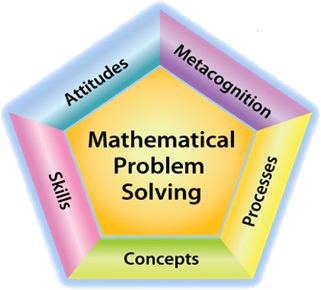
Built upon a research-based framework, Primary Mathematics provides a coherent curriculum that empowers all students to develop critical-thinking skills, master concepts, and build the confidence needed to set the stage for long-term math achievement.
Primary Mathematics utilizes the renowned Singapore Math® framework to establish a cohesive and innovative instructional model. This model fosters the development of knowledge and skills through rich tasks, visual models, productive struggle, problem solving, and meaningful mathematical discourse.
Powered by Pedagogy
The principles woven throughout Primary Math are drawn from research and global best practices on the most effective instruction for learning mathematics.
Click each principle to discover the details:
The Concrete – Pictorial – Abstract Approach
Students engage with mathematical concepts by first handling physical objects, then representing mathematical ideas using diagrams, and finally using abstract representations. Through the use of concrete materials and visual representations, students are able to see and make sense of the math and the abstract representations.
Visual Models including Bar Models
Visual models such as number bonds, bar models and fraction models are hallmarks of Primary Mathematics. These models help students visualize and understand abstract math concepts.
Problem-Solving
Heuristics introduced at each grade level equip students with strategies to solve increasingly complex problems. Students apply these strategies to solve real-world problems through a consistent problem-solving process.
Mathematical and Perceptual Variation
Mathematical variation presents opportunities for students to experience the same math concept through various applications. Perceptual variation showcases a mathematical concept using different representations. Variation deepens understanding as students apply the concepts in different ways.
Learning Progression
Math is learned incrementally, with one concept building on the next. More depth is added, linking new concepts to the learning that has already been mastered. Learning math this way leads to deeper conceptual understanding.
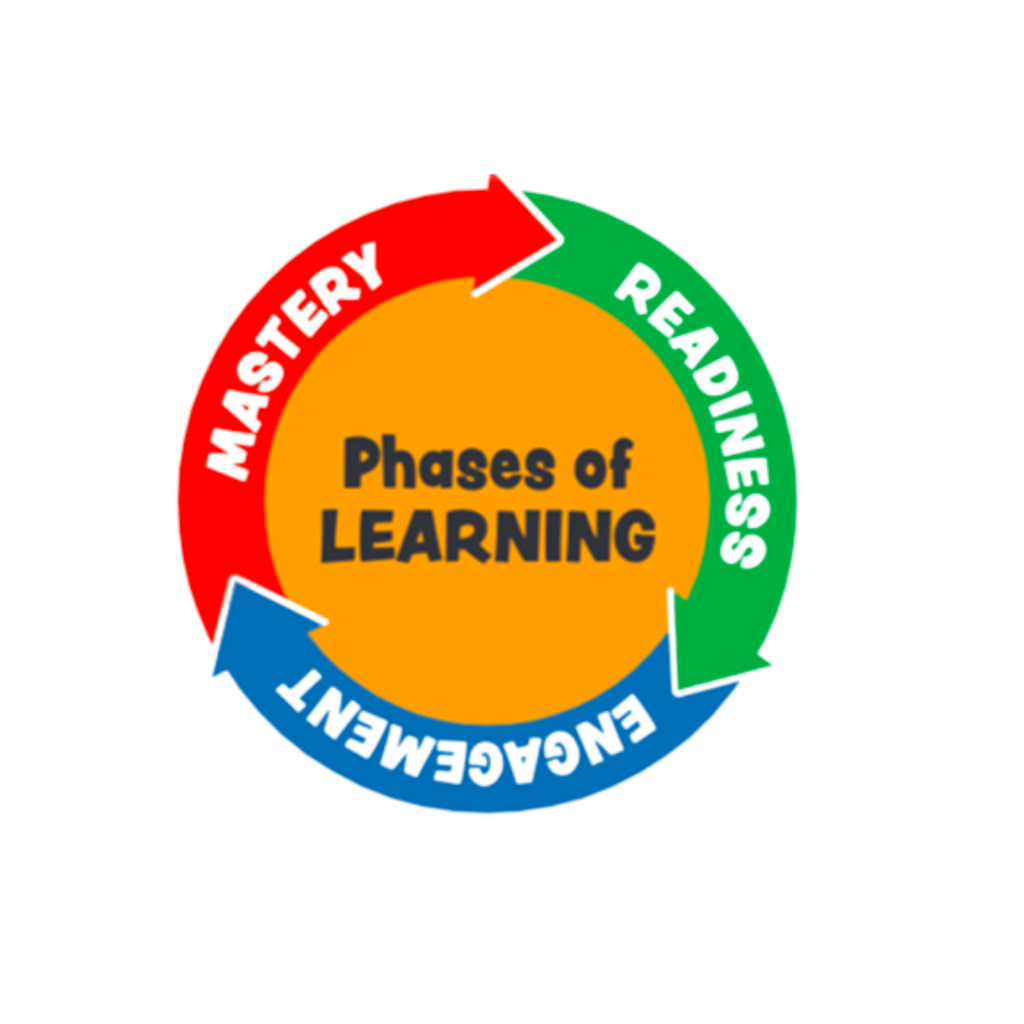
The Readiness - Engagement - Mastery Instructional Model
The instructional model is based upon the Three Phases of Learning: Readiness, Engagement, and Mastery. Each phase helps students build conceptual understanding through a range of practice and fluency-building activities, including frequent opportunities for hands-on experiences, classroom discussion, timely differentiated instruction, and problem-solving. The Teacher’s Guide provides detailed support on how each lesson can be planned, developed, and carried out daily.
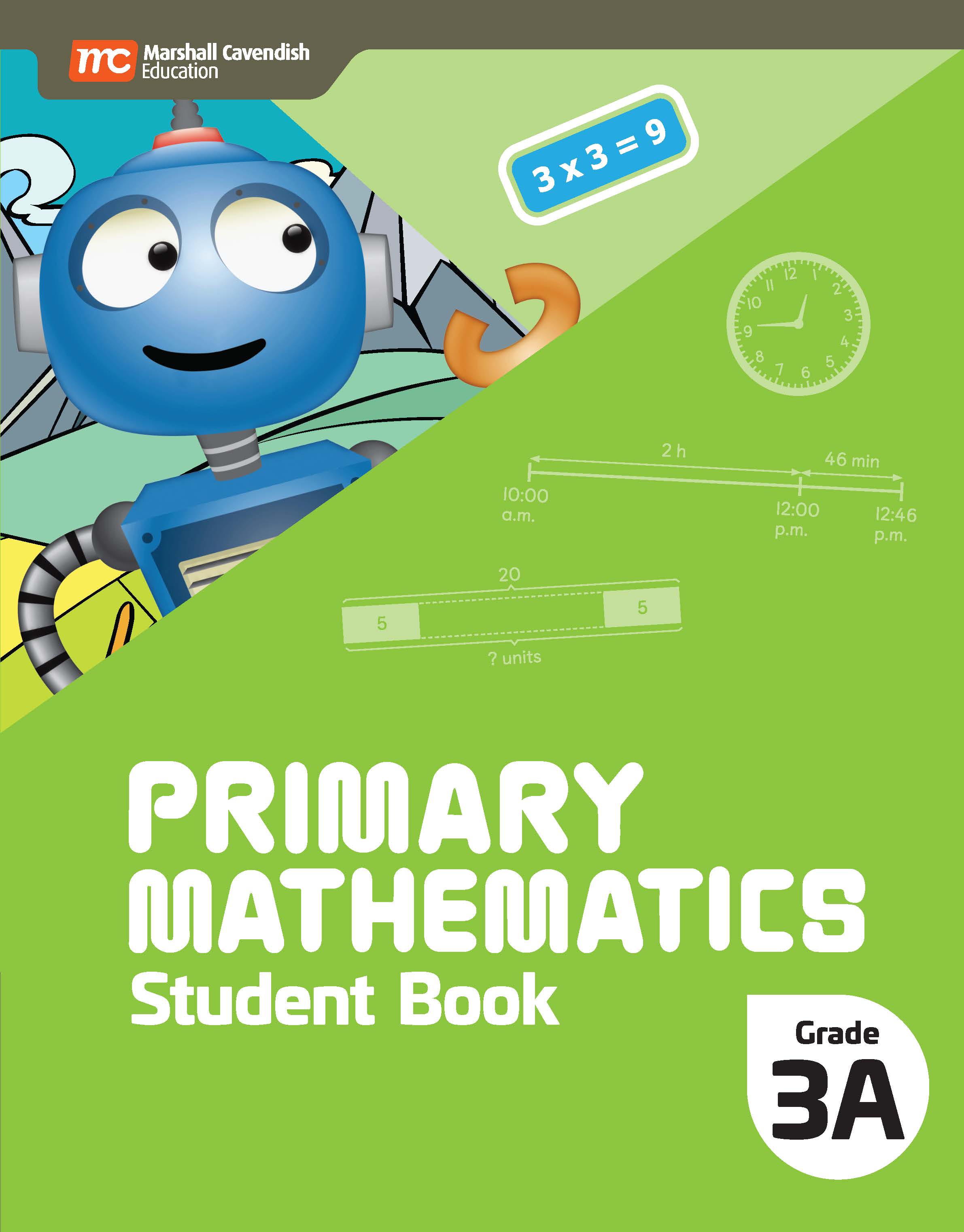
The Student Experience
Students construct knowledge and build skills through a deliberate set of tasks/anchor tasks/questions. Each is carefully designed to expose students to a different aspect of a concept. This process of learning helps students make new connections and progress to the next level of understanding as they work toward mastery.
Click each phase below to discover the details:
Readiness Phase
The Readiness phase connects prior learning and gives students an inquiry-based opportunity to enter a task.
The Chapter Opener stimulates curiosity and interest through a context that connects math to real life, taps into prior knowledge and encourages discussion.
Recall helps to assess students’ readiness for the chapter so teachers can allocate appropriate resources during lessons.
Engagement Phase
The Engagement Phase builds knowledge through the use of the Anchor Task, Learn, Activity!, and Learn Together elements in each lesson. The engagement phase provides an opportunity for productive struggle, flexible thinking, collaboration, problem-solving and concept development.
1. Task (Anchor Task): Relatable questions that provide opportunities for productive struggle.
2. Learn: Teacher-guided inquiry related to the task (anchor task). It introduces the most fundamental aspect of a concept for the learning objective. Students learn through concrete experiences and visual models.
3. Learn Together: Consists of a series of problems that are carefully varied and progress from the simplest concept in the Learn, to more complex ones, developing and deepening students’ understanding. Learn Together is student-centric.
4. Activity: Requires students to solve problems collaboratively and demonstrate understanding by articulating their thinking.
Mastery Phase
The Mastery Phase provides ample opportunities at the end of every lesson for independent practice and consolidation. Students develop mastery in this phase through a number of resources, including:
Student Book:
- Practice On Your Own: An independent practice at the end of a lesson that serves as formative assessment, informing teachers which resource they should assign to students for more independent practice.
- Think: Leads students to reflect on math concepts and challenges them to use different strategies to solve a non-routine problem.
- Chapter Practice: Consolidates concepts and skills across a chapter through independent practice.
- Performance Task: Formative assessment tasks set in a real-world context with accompanying rubrics. The questions require the application of concepts and skills learned.
- STEAM Project: Interdisciplinary tasks that span multiple chapters and shows the relevance and importance of mathematics. They promote critical and creative thinking.
- Solve! Heuristics: A dedicated section to teach problem-solving strategies that can be applied to different types of problems. Across the grades students will be introduced to new strategies that will help them enter and solve complex problems.
Additional Practice: Provides on-level, independent practice at the end of each lesson to consolidate skills and concepts.
Mastery and Beyond: Provides on-level, independent practice at a section level to connect multiple lessons. The Teachers Guide points out when to assign Mastery and Beyond practices.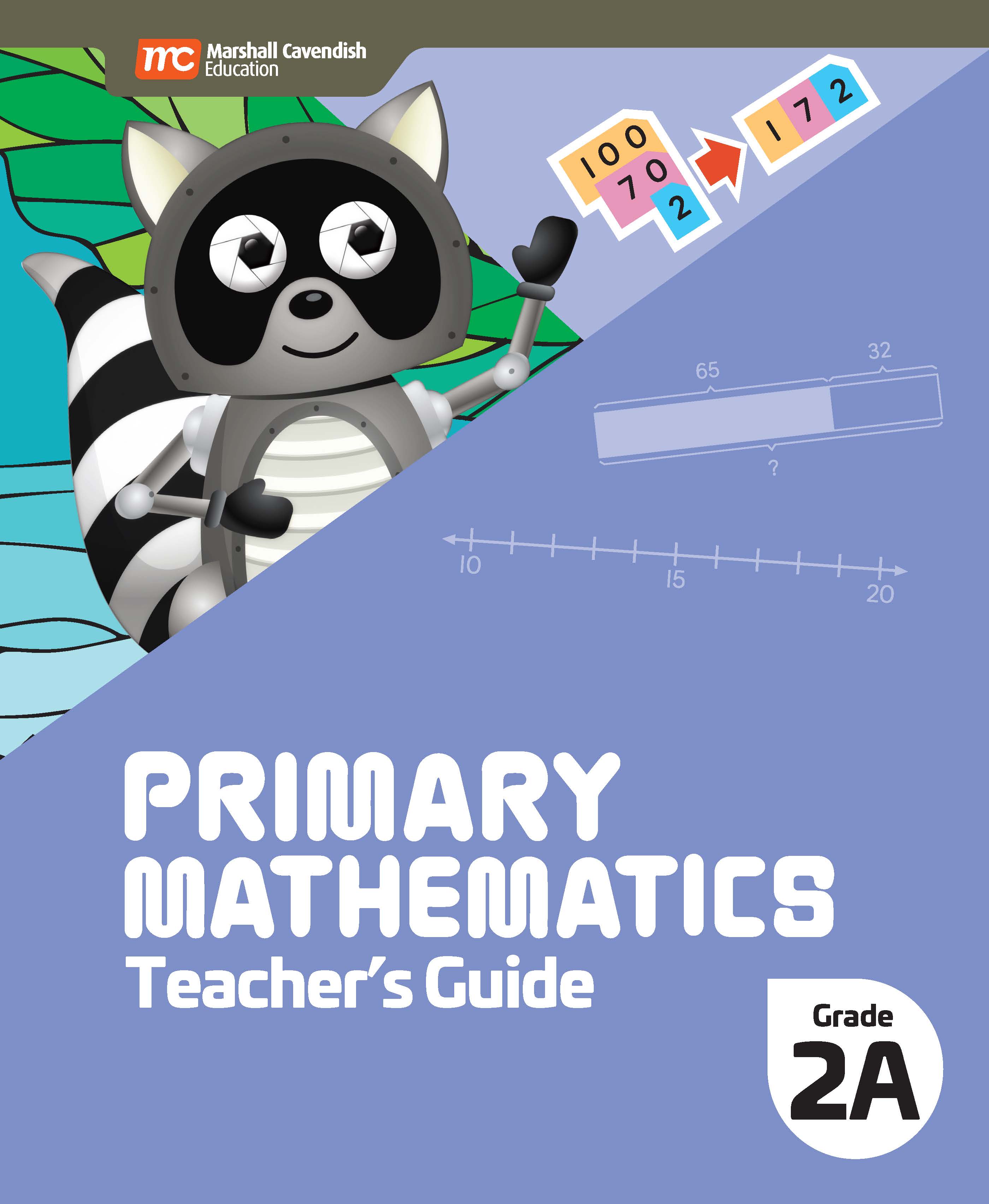
The Teacher Experience
Quality resources, ideas, and strategies in the Teacher’s Guide make planning seamless and lessons coherent. Teacher’s Guides, developed by a team of Singapore Math Experts from US classrooms in collaboration with authors in Singapore, support US teachers with step-by-step planning and embedded teacher support within every lesson to help meet the needs of all learners.
Click each resource below to discover the details:
Across Grades Progression Charts
At the beginning of each chapter shows a longitudinal progression providing an overview of prior knowledge, current grade learning objectives and future learning.
Chapter Overview, Progression, and At-A-Glance
The Chapter Overview provides embedded teacher support by providing insights into the Key Ideas of the chapter. Concrete-Pictorial-Abstract Progression provides an overview of the concrete materials used, as well as pictorial and abstract representations students will encounter in the chapter.
Chapter Progression is an overview of what students will learn in each chapter.
Chapter At A Glance shows the lesson objectives, focus questions, I CAN statements, new vocabulary, materials and instructional resources necessary to prepare for teaching.English Language Support
Promoting Growth
Lesson Opener + Lesson Developer
Lesson Opener provides teaching ideas for teachers to orchestrate concrete experiences in the Task (Anchor Task).
Lesson Development provides ideas for concrete experiences and support at different levels of mastery.Caution + Lesson Debrief
Caution highlights common errors and provides suggestions to rectify the errors.
Lesson Debrief wraps up the lesson by posing focus questions for students to articulate their understanding through discussion or journaling and for teachers to evaluate students’ level of understanding.
Differentiated Instruction
Transition Guide
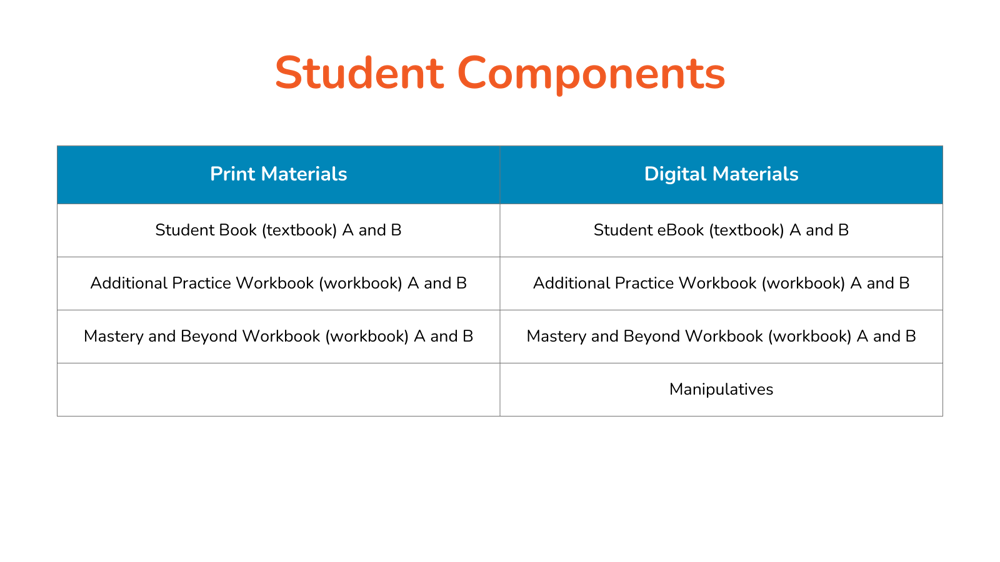
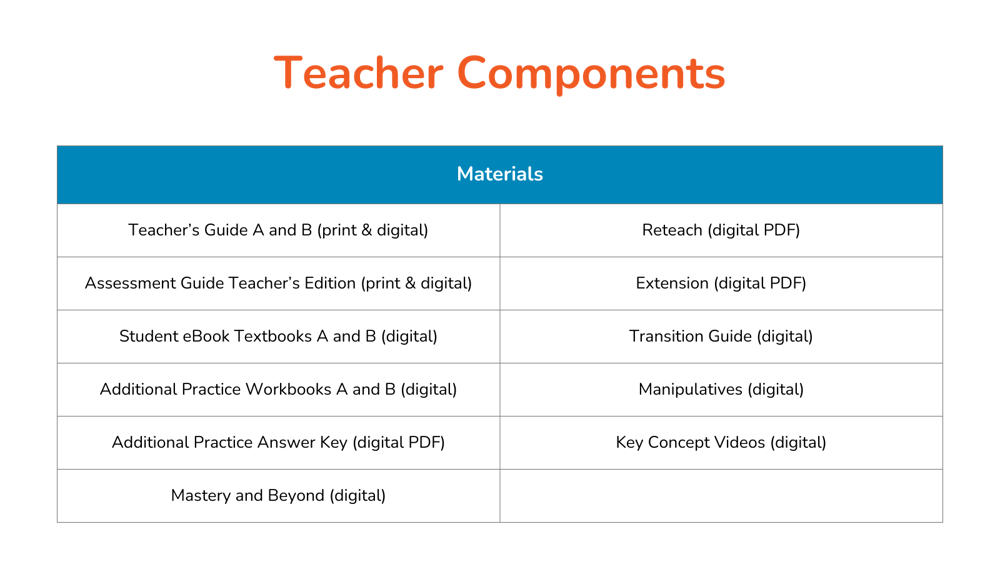
✨ Take a virtual tour of Primary Mathematics ✨
Ready to take your math curriculum to the next level? Get access now to tour the entire program's features. Explore the consistent instructional framework for students to connect prior knowledge to build deep conceptual understanding, and supports educators to deliver coherent, effective lessons.
- Program Overview
- Teacher Guides - grades K, 3, and 5
- Student Books - grades K, 3, and 5
- Additional Practice - grades K, 3, and 5
- Curriculum Overview
- Instructional approach
- Assessment & Data
🔍 👉 Get access now
